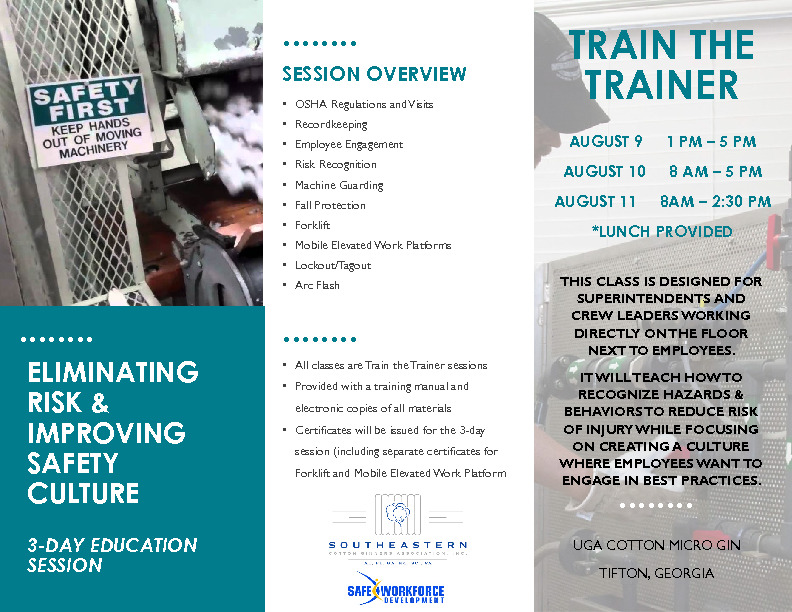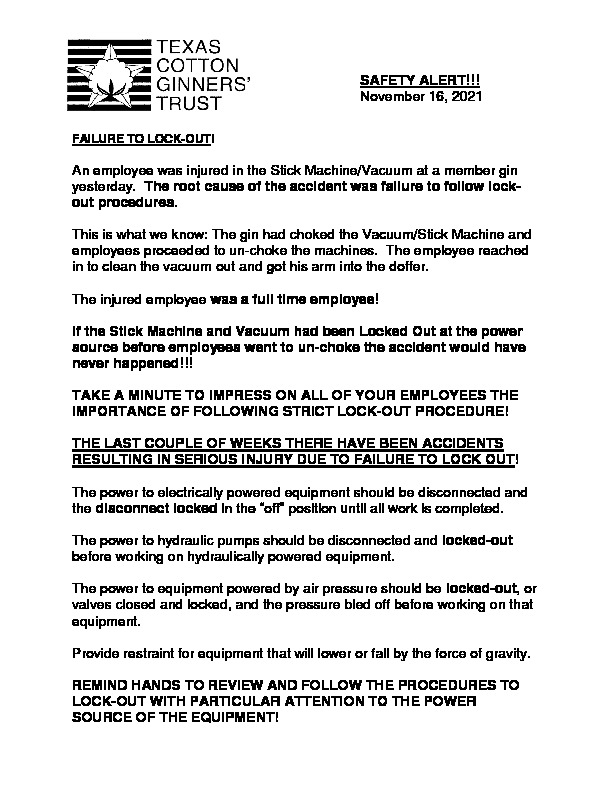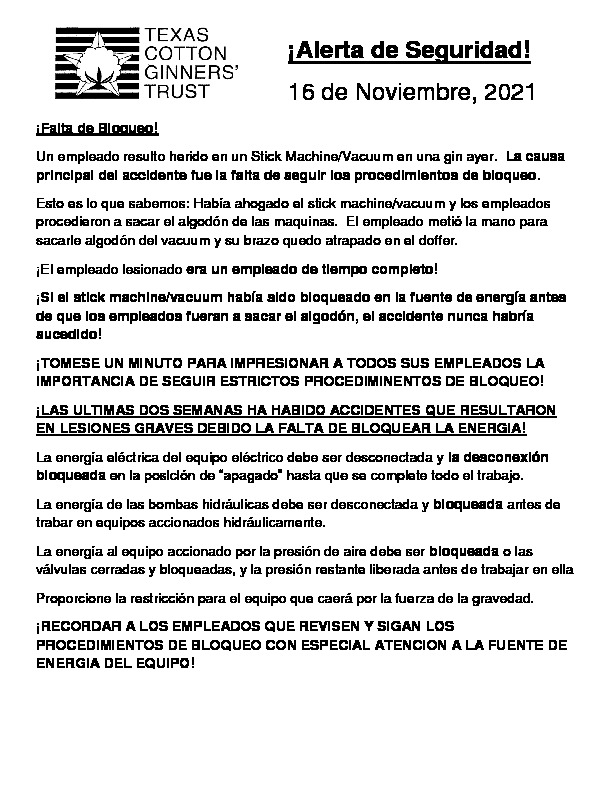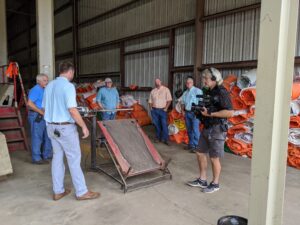It is now late spring and temperatures across the southeast have been fairly mild, but we all know the summer heat and humidity is just around the corner. I wanted to take the opportunity to discuss the topic of Heat Stress and Illness Prevention. In April 2022 OSHA launched its National Emphasis Program (NEP) for Heat-Related Hazards. This Nep is designed to protect at-risk indoor/outdoor workers from the rising threat of heat-related illness. The NEP targets 70 high risk industries which includes agriculture. This article aims to address what the NEP means to employers and how to address and prevent heat-related illness in the workplace.
A National Emphasis Program is not an OSHA Standard but does empower OSHA with enforcement measures to insure employers are providing a workplace free from the effects of heat-related hazards. This NEP applies when employees are exposed to heat above 80 F and humidity above 40% (80 F heat index). Moving forward OSHA inspectors:
- Will ask about heat-related prevention programs during all on-site inspections.
- Will open an inspection if heat-related illness is recorded on OSHA 300 logs or there is an employee complaint.
- Will conduct randomly generated programmed inspections when the National Weather Service has issued a heat warning or advisory in the area.
In the southeast we have not experienced any programmed inspections, however other regions of the cotton belt did receive multiple heat-related programmed inspections in cotton gins last summer. This National Emphasis Program on Heat-Related Hazards is something OSHA is taking serious and something we as an industry should also be taking serious as we prepare and move into the heat of the summer.
Employers have always been aware of the dangers of heat in the workplace and in turn have made adjustments to address the hazards facing employees working indoors/outdoors in hot environments. This may be providing water, shade, frequent breaks, early starts times, etc. all which help to address the ability of employees to avoid the dangers of heat related illnesses. With this program, OSHA has released several fact sheets and guidelines to help employers address the hazards of heat related illness and increase awareness with employees.
OSHA Heat Illness Prevention Campaign: https://www.osha.gov/heat
OSHA Heat-exposure: https://www.osha.gov/heat-exposure
OSHA Fact Sheet: https://www.osha.gov/sites/default/files/publications/heat_stress.pdf
OSHA posters: https://www.osha.gov/publications/bytopic/heat-illness-prevention
OSHA Heat Safety Tool: https://www.osha.gov/heat/heat-app
The links above provide great information on the topics of Heat-Related Illness and include information to assist employers with creating, implementing and training employees on heat-related illness prevention programs. Along with the written information in the links there are also many posters that can be downloaded and placed around the workplace to help remind workers about the dangers of heat-related illness. There is also a link above for an app to help employers monitor and predict when heat-related hazards may be present at their locations.
What Factors May Contribute to Heat-Related Illness?
- High temperature and humidity
- Low fluid consumption
- Direct sun exposure or extreme heat
- Limited air movement
- Physical exertion
- Bulky protective clothing
What is Heat-Related Illness?
Heat Stroke: Is the most serious and occurs when the body can no longer regulate temperature and body temperature rises to levels greater than 104°F. This is a medical emergency that may result in death. The symptoms are confusion, loss of consciousness, seizures, and lack of the ability to sweat. Medical help must be called while attempting to cool worker down.
Heat Exhaustion: Is the next most serious and results in headache, nausea, dizziness, weakness, irritability, confusion, thirst, heavy sweating, and body temperature over 104°F. Workers with heat exhaustion should be moved to cooler area and given liquids to drink. The body can be cooled with cold compresses. Workers with signs of heat exhaustion should be taken to a health clinic or ER for treatment. Heat exhaustion can lead to heat stroke if not treated.
Heat Cramps: Are muscle pains caused by the loss of body salts and fluid due to sweating. Workers must replace fluid loss by drinking water or electrolyte replacement liquids .
Heat Rash: is the most common problem with hot work environments and is caused by sweating. It appears as red cluster of pimples on the neck, upper chest, groin, or elbow creases. The best treatment is to provide a cooler, less humid work environment.
One thing to remember with each of these types of heat illness, is that if not observed and treated early a lesser illness could become a more serious illness. Therefore monitoring for and understanding symptoms is very important in protecting workers from heat related illness.
What Is OSHA Looking for from Employers?
- Written Heat-Related Illness and Prevention Program. This program should address heat hazards, symptoms of heat-related illness, and emergency response plans.
- Emergency planning and response plans must be in place. What to do if heat illness symptoms occur. Who to call and how to provide emergency care until help arrives
- Training provided in a language and manner workers understand, including information on health effects, symptoms, and how to prevent and response the heat illness.
- Designated a person to oversee the heat stress program. This person must be trained in the hazards, physiological responses to heat, and controls. This person will oversee and monitor the program
- Hazard identification involves recognizing heat hazards and the risk to workers due to high temperature, humidity, sun exposure, etc.
- Monitoring for heat illness symptoms and establishing a system to report potential issues. Using the buddy system will assist supervisors and workers to monitor and watch for signs of heat illness.
- Water Rest Shade. Water is made available. Workers ae encouraged to drink water in small amounts frequently. Fully shaded or air-conditioned areas are available for rest and cooling down.
- Acclimatization is when workers are given time to build tolerance to working in the heat. Workload and exposure are gradually increased while taking frequent water and rest breaks. Acclimatization may take up to 14 days or longer and depends on the individual and the work environment.
- Modified work schedules may reduce worker exposure to heat. Increasing work/rest cycles, starting work earlier, rescheduling physically demanding work, and stopping work are all methods to modify work schedules to limit or prevent exposure of workers to high heat hazards.
It is important for employers to monitor and be aware of heat related illness in the workplace. Unfortunately we work in a hot humid area of the country and these heat related issues may arise at some point. These topics have been discussed in the past and many of you already have methods in-place to address some of the hazards and issues presented above. With the introduction of the OSHA National Emphasis Program Related to Heat Illness Prevention, this presents a great opportunity to use the guidelines and information provided by OSHA to reevaluate and formalize a Heat-Related Illness Prevention Program at your gin.
AK




